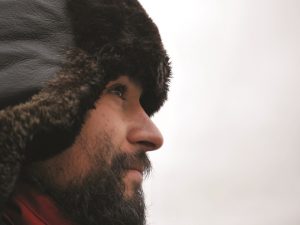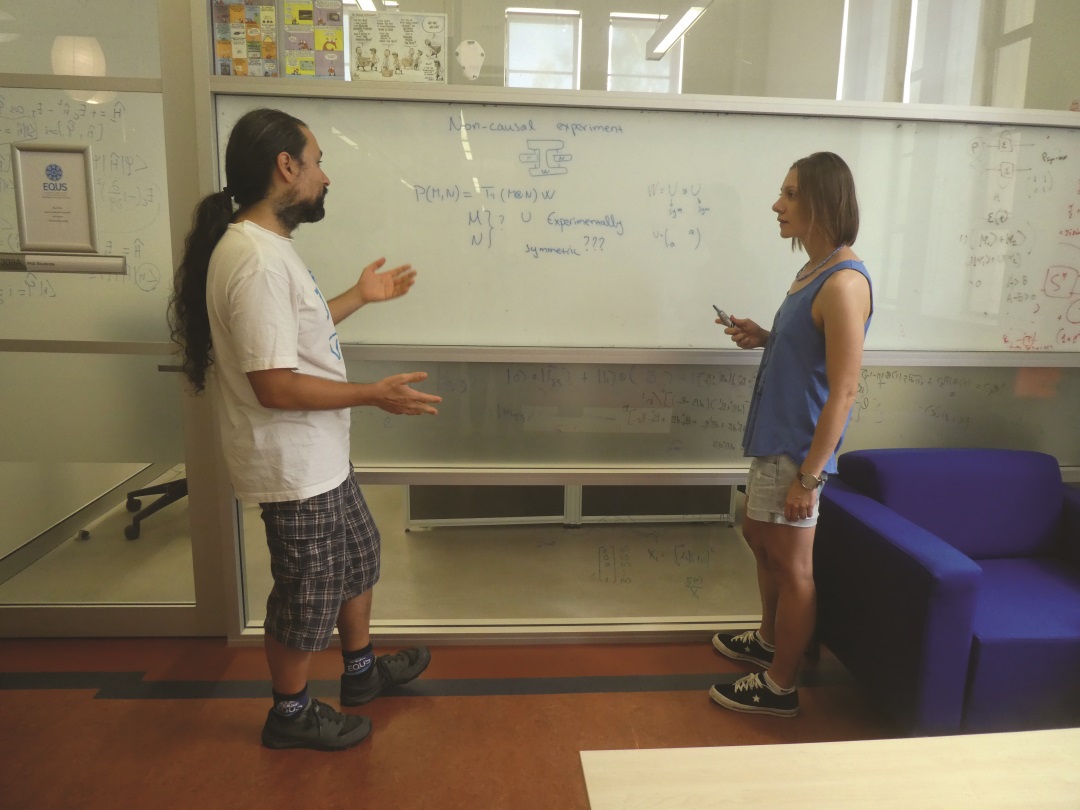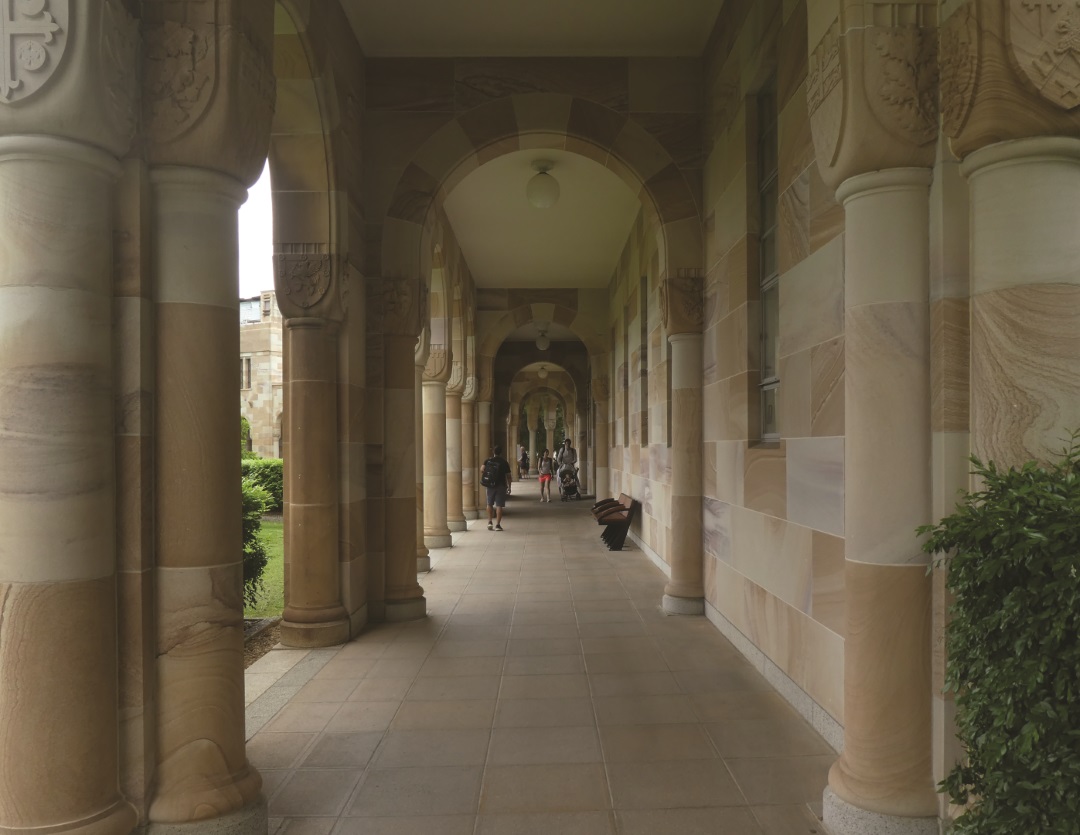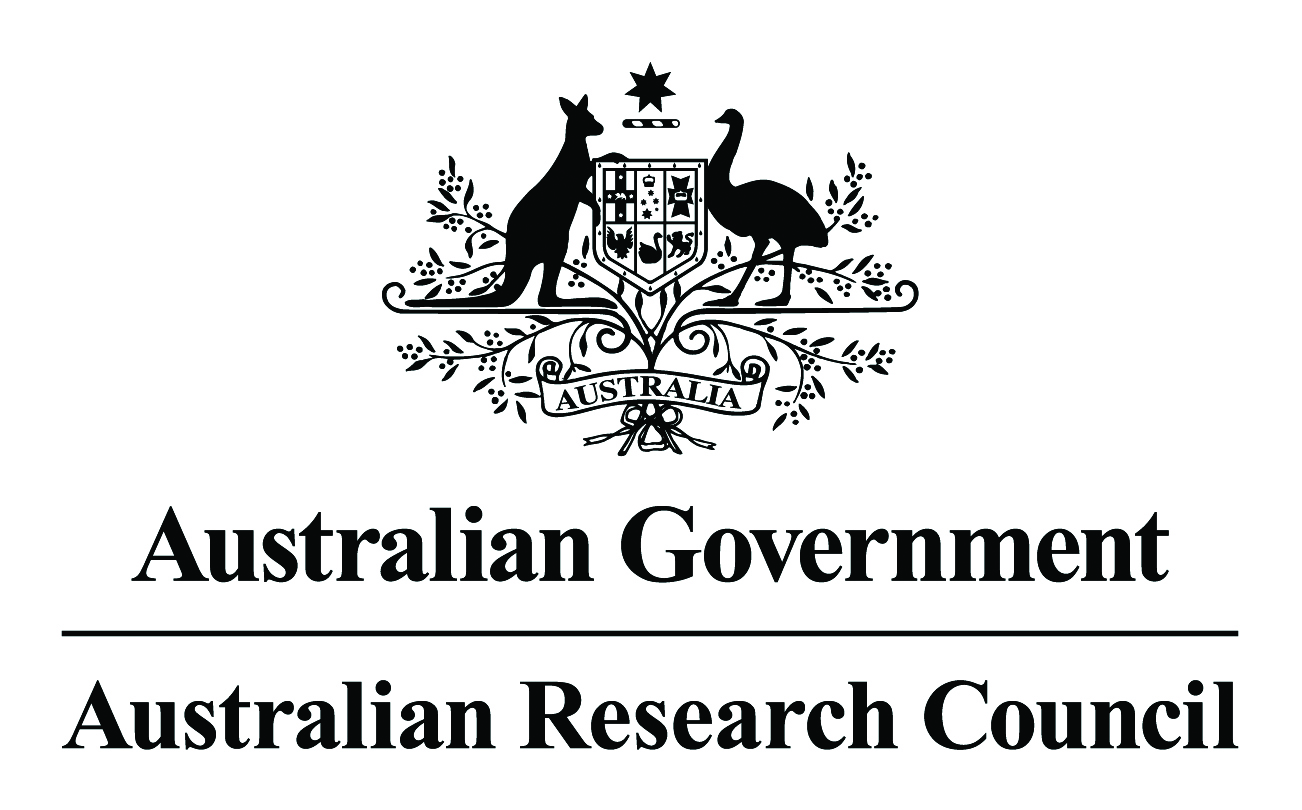Forget everything you thought you knew
The notion that there is a linear order to things that we do, see and experience is something firmly rooted in our understanding of the world. We take it for granted that there is an inherent causality to everything – that what happens in the past influences what happens in the present, and that what happens in the present will have some bearing on the future – even if we cannot exactly predict how that influence will materialise.
However, when quantum physicists look at nature on the smallest scales, including atomic and subatomic scales, they often find that the things we take for granted are not necessarily the case. With that in mind, Dr Fabio Costa from the University of Queensland in Australia has been looking at the concept of causal relations in quantum physics, and combining elements of physics, quantum information and computer science in his investigations.
WHO CAME UP WITH THE CONCEPT OF QUANTUM PHYSICS POTENTIALLY CHANGING OUR NOTIONS OF CAUSE AND EFFECT?
The idea originates from a combination of studies of quantum physics and the other pillar of modern physics – that of general relativity. Albert Einstein’s theory of gravity – general relativity – predicts that all objects with mass bend space and time, possibly changing the order in which things happen. “Several physicists have pointed out that a combination of the two theories might result in some new type of cause-effect relationship, although there have been many diverging opinions as to what this might mean,” explains Fabio. “It is only recently that researchers have started to explore the practical consequences of this idea.”
WHY IS FABIO AND HIS TEAM HOPING TO PROVE THAT THIS NEW TYPE OF CAUSE-EFFECT RELATIONSHIP IS TRUE?
Fabio and his colleagues have discovered that new causal relations could help computers solve difficult problems. Producing these relations using gravity would be extremely hard, if not impossible. (Read more about this in Cosmos: https://tinyurl.com/y57a4vft). However, researchers from the University of Pavia and Fabio’s PhD thesis findings at the University of Vienna, Austria, discovered that new cause-effect relations can arise in laboratory experiments in ways that are unrelated to gravity. The scientists hope that these experiments will answer fundamental questions about causality, while at the same time providing a route towards more efficient computers.
HOW HAS FABIO AND HIS TEAM SHOWN THAT A SINGLE EVENT CAN BE BOTH A CAUSE AND AN EFFECT?
The laws of classical physics demand that the order of events is fixed. For example, only one person can be the first to enter a room, even if two people walk in together side by side. However, quantum physics disregards the laws of classical physics – it is known that a particle can be in two different locations at any one time. Therefore, the person who is the first to enter a room can also be said to be outside that room – if we take that idea to its conclusion, it is possible for two people to be the first to enter a room.
This is known as a superposition of two situations – objects can be in two different situations at the same time. If quantum physics can be said to govern all phenomena, then perhaps the things we consider “fixed” are in fact indefinite.
WHAT EXPERIMENTS HAVE BEEN DONE TO DEMONSTRATE A SUPERPOSITION OF CAUSAL RELATIONS?
Fabio and his team have performed experiments (see this article in Science Direct: https://tinyurl.com/yd3zfp3u), where they send a photon – a particle of light – in a superposition of two paths. Along each path, the photon meets two sets of lenses that transform it in some known way – for example, the lenses can turn the shape of the photon beam from a ball to a doughnut, or in some other way. Depending on the path the photon takes, it goes through the two sets in opposite orders. “A final interference measurement demonstrates that the photon went through both sets of lenses, but not in a given order: it was in a superposition of meeting one first, then the other, or the other way around,” says Fabio. “Although this is not the most general situation predicted by the theory, and there are many details in the experiment to improve, it is an important proof of principle and a first step towards possible applications.”
The team hope that their findings will feed into quantum computing, where the use of superpositions of order could explore different sequences of operations while still performing each operation once.
UNDERSTANDING QUANTUM SUPERPOSITION: HOW A SINGLE EVENT CAN BE BOTH A CAUSE AND AN EFFECT
TOSSING A QUANTUM COIN
“Imagine tossing a coin and keeping it covered,” explains Fabio. “Until you look at it, you cannot say whether it has landed on heads or tails. However, you can say that one of the two is true. If you toss the coin lots of times, roughly half of those tosses will land on heads and half on tails – there is an equal probability that the coin will fall on either side.
“With a quantum coin we can do a similar experiment, where we measure either heads or tails with equal probability (in reality, the coin would be a particle going left or right, or in two possible energy states, or through other quantum properties). However, if, instead of measuring the quantum coin, we “toss” it again, we find that it always lands on heads. This would not happen with an ordinary coin.
“It is as if, after the first toss, the quantum coin is aware of both possibilities. This phenomenon is called interference and can be used to demonstrate quantum superposition: the quantum coin is neither heads nor tails; it is in a new state that is a combination of both.”
CATCHING A BUS
“A new idea is that causal relations can be in a superposition, too,” says Fabio. “Think of a road with two bus stops on either side. According to the timetable, every day, two buses arrive at noon at both bus stops. However, because of traffic and other delays, one of the buses will arrive before the other. When the first bus arrives, its passengers can get on the second bus. Therefore, we can say that the first event (the bus arriving) is a cause of the second (passengers getting on the second bus).
“However, it is not certain which bus will arrive first; on each day it will be one or the other. This means that the two events have some probability of being either the cause or the effect. In quantum theory, we can have a superposition of the two situations.
“Crucially, if we were to measure a superposition, it would be destroyed. Upon measuring, we would find one event as the cause and the other as the effect, i.e. either one or the other bus arrives first. However, by making an appropriate interference experiment, we can conclude that neither of the two cases is true: we have a genuine superposition of cause and effect.”
Reference
https://doi.org/10.33424/FUTURUM38
The notion that there is a linear order to things that we do, see and experience is something firmly rooted in our understanding of the world. We take it for granted that there is an inherent causality to everything – that what happens in the past influences what happens in the present, and that what happens in the present will have some bearing on the future – even if we cannot exactly predict how that influence will materialise.
However, when quantum physicists look at nature on the smallest scales, including atomic and subatomic scales, they often find that the things we take for granted are not necessarily the case. With that in mind, Dr Fabio Costa from the University of Queensland in Australia has been looking at the concept of causal relations in quantum physics, and combining elements of physics, quantum information and computer science in his investigations.
WHO CAME UP WITH THE CONCEPT OF QUANTUM PHYSICS POTENTIALLY CHANGING OUR NOTIONS OF CAUSE AND EFFECT?
The idea originates from a combination of studies of quantum physics and the other pillar of modern physics – that of general relativity. Albert Einstein’s theory of gravity – general relativity – predicts that all objects with mass bend space and time, possibly changing the order in which things happen. “Several physicists have pointed out that a combination of the two theories might result in some new type of cause-effect relationship, although there have been many diverging opinions as to what this might mean,” explains Fabio. “It is only recently that researchers have started to explore the practical consequences of this idea.”
WHY IS FABIO AND HIS TEAM HOPING TO PROVE THAT THIS NEW TYPE OF CAUSE-EFFECT RELATIONSHIP IS TRUE?
Fabio and his colleagues have discovered that new causal relations could help computers solve difficult problems. Producing these relations using gravity would be extremely hard, if not impossible. (Read more about this in Cosmos: https://tinyurl.com/y57a4vft). However, researchers from the University of Pavia and Fabio’s PhD thesis findings at the University of Vienna, Austria, discovered that new cause-effect relations can arise in laboratory experiments in ways that are unrelated to gravity. The scientists hope that these experiments will answer fundamental questions about causality, while at the same time providing a route towards more efficient computers.
HOW HAS FABIO AND HIS TEAM SHOWN THAT A SINGLE EVENT CAN BE BOTH A CAUSE AND AN EFFECT?
The laws of classical physics demand that the order of events is fixed. For example, only one person can be the first to enter a room, even if two people walk in together side by side. However, quantum physics disregards the laws of classical physics – it is known that a particle can be in two different locations at any one time. Therefore, the person who is the first to enter a room can also be said to be outside that room – if we take that idea to its conclusion, it is possible for two people to be the first to enter a room.
This is known as a superposition of two situations – objects can be in two different situations at the same time. If quantum physics can be said to govern all phenomena, then perhaps the things we consider “fixed” are in fact indefinite.
WHAT EXPERIMENTS HAVE BEEN DONE TO DEMONSTRATE A SUPERPOSITION OF CAUSAL RELATIONS?
Fabio and his team have performed experiments (see this article in Science Direct: https://tinyurl.com/yd3zfp3u), where they send a photon – a particle of light – in a superposition of two paths. Along each path, the photon meets two sets of lenses that transform it in some known way – for example, the lenses can turn the shape of the photon beam from a ball to a doughnut, or in some other way. Depending on the path the photon takes, it goes through the two sets in opposite orders. “A final interference measurement demonstrates that the photon went through both sets of lenses, but not in a given order: it was in a superposition of meeting one first, then the other, or the other way around,” says Fabio. “Although this is not the most general situation predicted by the theory, and there are many details in the experiment to improve, it is an important proof of principle and a first step towards possible applications.”
The team hope that their findings will feed into quantum computing, where the use of superpositions of order could explore different sequences of operations while still performing each operation once.
TOSSING A QUANTUM COIN
“Imagine tossing a coin and keeping it covered,” explains Fabio. “Until you look at it, you cannot say whether it has landed on heads or tails. However, you can say that one of the two is true. If you toss the coin lots of times, roughly half of those tosses will land on heads and half on tails – there is an equal probability that the coin will fall on either side. “With a quantum coin we can do a similar experiment, where we measure either heads or tails with equal probability (in reality, the coin would be a particle going left or right, or in two possible energy states, or through other quantum properties). However, if, instead of measuring the quantum coin, we “toss” it again, we find that it always lands on heads. This would not happen with an ordinary coin.
“It is as if, after the first toss, the quantum coin is aware of both possibilities. This phenomenon is called interference and can be used to demonstrate quantum superposition: the quantum coin is neither heads nor tails; it is in a new state that is a combination of both.”
CATCHING A BUS
“A new idea is that causal relations can be in a superposition, too,” says Fabio. “Think of a road with two bus stops on either side. According to the timetable, every day, two buses arrive at noon at both bus stops. However, because of traffic and other delays, one of the buses will arrive before the other. When the first bus arrives, its passengers can get on the second bus. Therefore, we can say that the first event (the bus arriving) is a cause of the second (passengers getting on the second bus).
“However, it is not certain which bus will arrive first; on each day it will be one or the other. This means that the two events have some probability of being either the cause or the effect. In quantum theory, we can have a superposition of the two situations.
“Crucially, if we were to measure a superposition, it would be destroyed. Upon measuring, we would find one event as the cause and the other as the effect, i.e. either one or the other bus arrives first. However, by making an appropriate interference experiment, we can conclude that neither of the two cases is true: we have a genuine superposition of cause and effect.”
 DR FABIO COSTA
DR FABIO COSTASchool of Mathematics and Physics
University of Queensland
Australia
FIELD OF RESEARCH: Quantum Physics
RESEARCH PROJECT: Fabio’s work is concerned with exploring causal relations in quantum physics and how our notions of cause and effect might be changed. The findings could one day be harnessed to develop new technologies capable of performing incredible feats.
FUNDERS: Australian Research Council, John Templeton Foundation
 DR FABIO COSTA
DR FABIO COSTASchool of Mathematics and Physics
University of Queensland
Australia
FIELD OF RESEARCH: Quantum Physics
RESEARCH PROJECT: Fabio’s work is concerned with exploring causal relations in quantum physics and how our notions of cause and effect might be changed. The findings could one day be harnessed to develop new technologies capable of performing incredible feats.
FUNDERS: Australian Research Council, John Templeton Foundation
Quantum physics was developed around the turn of the 20th century and has since provided the basis for our most fundamental understanding of nature. When Einstein first encountered quantum physics, he believed it was flawed, because it seemed to imply that distant particles could interact instantaneously, which he deemed “spooky”.
While physicists haven since proven that quantum effects cannot be used to send instantaneous messages, they still debate on how to best interpret the theory. Nevertheless, quantum physics has been essential in explaining chemistry, properties of materials, and high-energy physics (such as particle accelerators). One of the main stumbling blocks to our understanding of quantum physics is that it is counterintuitive.
HOW HAS QUANTUM PHYSICS EVOLVED OVER THE YEARS?
Beginning in the last two decades of the 20th century, researchers have come to realise that the strange aspects of quantum physics can be harnessed as resources for novel technologies. One of the main advantages of new quantum technologies comes from the capability of quantum systems to process information more efficiently, which could one day lead to faster computers and a means to communicate more efficiently. The interest in the field of quantum computing is on the rise and industry has started to become increasingly involved, where foundational studies are turning to how theories could lead to applied science.
SHOULD YOU CONSIDER A FIELD IN QUANTUM PHYSICS?
If you like combining deep conceptual questions about nature with applications at the forefront of technology, then quantum physics is an excellent career path. It is a particularly exciting time at present, because abstract ideas are taking shape in the form of more advanced technologies.
ARE THERE MANY CAREER OPPORTUNITIES IN THIS FIELD?
The demand for quantum physicists is currently on a steep upward curve. Both the US and Europe have recently announced a billion-dollar investment in quantum science. Large investments are also coming from China, Australia, the UK and Canada. Alongside this, companies such as Google, IBM and Rigetti are competing to develop the first applied quantum technologies. For quantum physicists, the world really is their oyster and it is something that looks certain to continue in the future.
DO YOU HAVE TO HAVE A DEGREE TO FIND EMPLOYMENT IN THIS AREA?
A PhD is typically necessary to achieve a specialisation in quantum science (ranging from foundations, to theoretical quantum information and applied quantum technologies). Universities across the world are opening specialised master’s programmes in quantum science, which means it will become easier to find employment without going through a PhD. However, it is likely that a degree will remain necessary to find employment in the area of quantum physics.
• The average salary for a quantum physicist is thought to be around AUD162,800
• The Australian Institute of Physics is dedicated to promoting the role of physics in research,
education, industry and the community. Opportunities can be found across its website.
• Allaboutcareers.com has several write-ups of different jobs, including a particle physicist,
which makes for interesting reading if you think this might be the career for you.
WHAT IS IT ABOUT QUANTUM PHYSICS THAT FASCINATES YOU?
Quantum physics provides tools that we can use to understand deeper aspects of reality and escape the intuition we have built into our everyday lives. At the same time, it provides an avenue for linking its most puzzling aspects to concrete situations, which make for better understanding.
ARE YOU MORE INTERESTED IN COMING UP WITH THEORIES OR TESTING AND PROVING THEM?
As a theoretician, my focus is on developing new ideas and theories, with the goal to better understand the foundations of physics. However, it’s very important that the abstract ideas can be tested – at least in principle. This is a way to be sure our theories are in some way connected to reality and not just abstract fantasies.
DOES YOUR HEAD HURT WHEN YOU THINK OF CONCEPTS THAT ARE BEYOND OUR NORMAL HUMAN UNDERSTANDING?
Anything that goes through my head is definitely within human understanding! Concepts within quantum physics can appear to be exceptionally difficult from the outside, but anybody with enough motivation and time can grasp even the most advanced concepts. My head rarely hurts while thinking but using the brain can consume tremendous amounts of energy, which is perhaps why I often need extra snacks during the day!
HAVE YOU ALWAYS BEEN INTERESTED IN MATHS AND PHYSICS?
I have always been interested in science, but not particularly in maths or physics. In fact, I remember that the maths and physics subjects I studied at school were not the most exciting. However, towards the end of high school, I started to hear about relativity and quantum theory, which seemed like a whole new world to explore. So, I started to explore the concepts in more detail at university and continue to explore them every day.
HOW DO YOU LIKE TO APPROACH SCIENTIFIC PROBLEMS, AND DO YOU USE THE SAME APPROACH TO SOLVE OTHER EVERYDAY PROBLEMS?
Usually, I start with general themes, sometimes even vague ideas, and try to relate them to more precise questions. Given the question, I search the scientific literature to see what is known about it, study the relevant sources in more detail, and then find a particular problem to address. At this point, I try to break down the problem in parts, which typically leads to me having to prove theorems or solving some calculations! I rarely end up making complicated calculations for everyday problems (although it does happen occasionally), but the general approach is similar: I look for reliable sources of information and then try to make the problem more precise, possibly by breaking it down into sub-problems.
1 – Studying physics requires a lot of hard work and commitment, but if you are prepared to put the work in, it can be very rewarding – always keep that in mind.
2 – Seize opportunities when they come – this could be a short research project, an internship, a summer programme at an institute abroad, anything – just ensure you seize the opportunity when it comes along.









